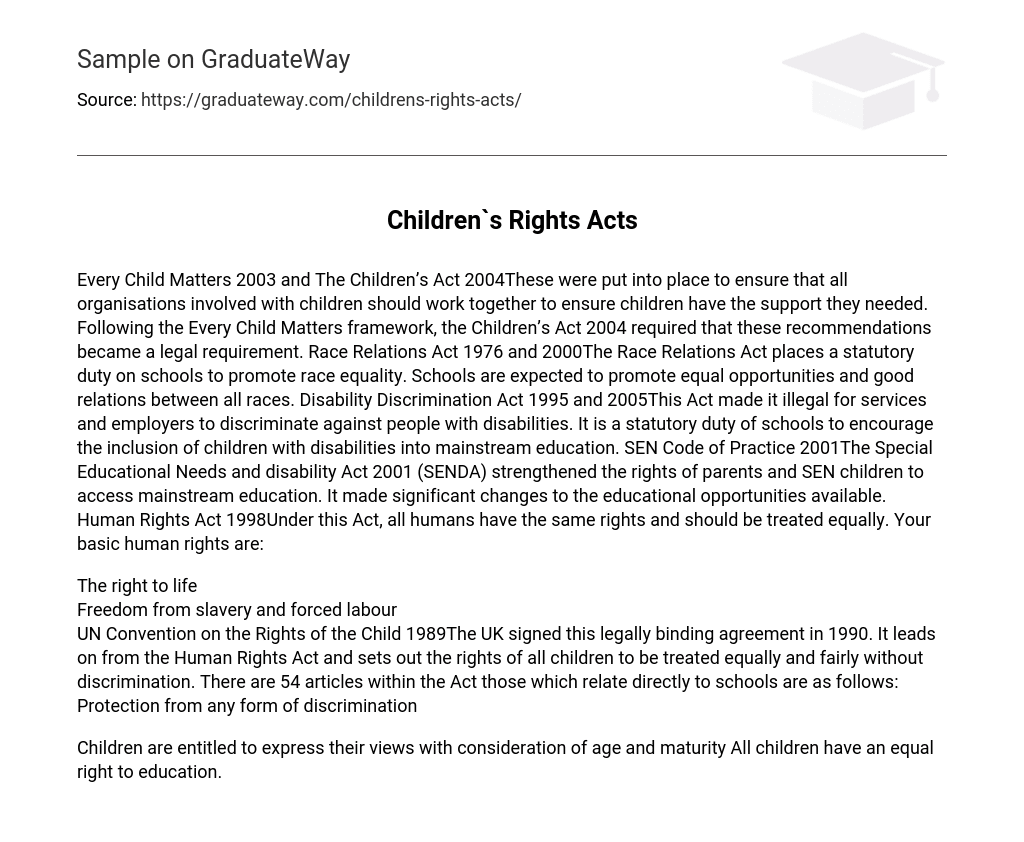- Every Child Matters 2003 and The Children’s Act 2004 were put into place to ensure that all organisations involved with children should work together to ensure children have the support they needed. Following the Every Child Matters framework, the Children’s Act 2004 required that these recommendations became a legal requirement.
- Race Relations Act 1976 and 2000 The Race Relations Act places a statutory duty on schools to promote race equality. Schools are expected to promote equal opportunities and good relations between all races.
- Disability Discrimination Act 1995 and 2005 made it illegal for services and employers to discriminate against people with disabilities. It is a statutory duty of schools to encourage the inclusion of children with disabilities into mainstream education.
- SEN Code of Practice 2001. The Special Educational Needs and disability Act 2001 (SENDA) strengthened the rights of parents and SEN children to access mainstream education. It made significant changes to the educational opportunities available.
- Human Rights Act 1998 all humans have the same rights and should be treated equally.
- UN Convention on the Rights of the Child 1989 The UK signed this legally binding agreement in 1990. It leads on from the Human Rights Act and sets out the rights of all children to be treated equally and fairly without discrimination. There are 54 articles within the Act those which relate directly to schools are as follows:
- Protection from any form of discrimination
- Children are entitled to express their views with consideration of age and maturity
- All children have an equal right to education.





